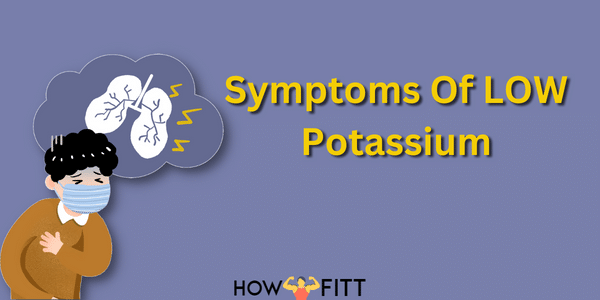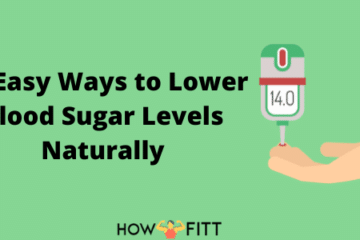Top Symptoms of LOW Potassium And How To Prevent: Potassium is an essential mineral that is important for a variety of bodily functions. A potassium deficiency can result in a wide range of symptoms, some of which may be overlooked. If you are experiencing any of the following symptoms, you may have a low potassium level and should speak to your doctor.
what can happen if your potassium level is too low?
Low potassium levels, or hypokalemia, can cause a variety of symptoms and complications. Some potential effects of hypokalemia include:
- Muscle weakness
- Fatigue
- Heart rhythm problems
In severe cases, hypokalemia can lead to life-threatening complications such as respiratory failure, coma, and even death. It is important to speak with a healthcare provider if you are experiencing symptoms of low potassium or have been diagnosed with hypokalemia.
Top Symptoms of LOW Potassium
- Fatigue and weakness: Low potassium levels can cause fatigue and muscle weakness, especially in the arms and legs.
- Muscle cramps and spasms: Potassium is important for muscle function, so low levels can cause cramps and spasms.
- Heart palpitations: Low potassium can lead to abnormal heart rhythms and palpitations.
- Constipation: Potassium helps regulate the balance of fluids in the body, and low levels can lead to constipation.
- Numbness and tingling: Low potassium can cause numbness and tingle in the hands and feet.
- Dry skin symptoms of low potassium: Potassium helps regulate the skin’s moisture balance, so low levels can lead to dry, flaky skin.
- Increased thirst: Low potassium can cause an increase in thirst as the body tries to compensate for the loss of fluids.
- Frequent urination: Potassium helps regulate the balance of fluids in the body, and low levels can lead to an increase in urination.
- Heartburn and indigestion: These symptoms of low potassium can cause digestive problems such as heartburn and indigestion.
- Mood changes: Potassium is essential for brain function, and low levels can cause mood changes, such as irritability and depression.
What can you do to prevent LOW potassium?
- Increasing potassium intake through diet: This can be done by consuming foods high in potassium such as bananas, avocados, sweet potatoes, beans, and leafy greens.
- Potassium supplements: These can be prescribed by a healthcare provider and can be taken orally or intravenously.
- Dialysis: This treatment is typically used for severe cases of low potassium levels, and involves the removal of excess fluids and waste from the body through a machine.
- Medications: Certain medications, such as diuretics, can cause low potassium levels and may need to be adjusted or stopped.
- Fluids: Increasing fluid intake can help increase potassium levels, as fluids can help to flush excess potassium out of the body.
- Lifestyle changes: Making lifestyle changes such as reducing alcohol consumption and increasing physical activity can also help to improve potassium levels.
How Long Does It Take To Recover From Low Potassium
The length of time it takes to recover from symptoms of low potassium (hypokalemia) depends on the underlying cause and the severity of the deficiency.
In some cases, correcting the deficiency may be as simple as increasing your potassium intake through diet or supplements.
However, if hypokalemia is caused by a more serious underlying condition, such as kidney disease or hormonal imbalance, it may take longer to recover and may require more intensive treatment.
If you have been diagnosed with hypokalemia, it is important to follow your healthcare provider’s treatment plan.
This may include increasing your potassium intake through diet, taking potassium supplements, or taking medications to correct the underlying cause.
Your healthcare provider will monitor your potassium levels and make any necessary adjustments to your treatment plan.
It is also important to follow a healthy lifestyle, including eating a balanced diet rich in potassium-containing foods, staying hydrated, and getting regular exercise, to help support overall health and prevent future deficiencies.
Also Read This
10 Heart Attack Symptoms You Need to Know
How To Prevent Heart Attack With Food
How To Cure Sinus Permanently At Home
Conclusion
If you are experiencing any symptoms of low potassium you must speak with a healthcare professional. The symptoms of low potassium levels can range from poor diet to certain medications, and treatment will depend on the underlying cause.
In some cases, supplements or dietary changes may be recommended to help restore normal potassium levels.




